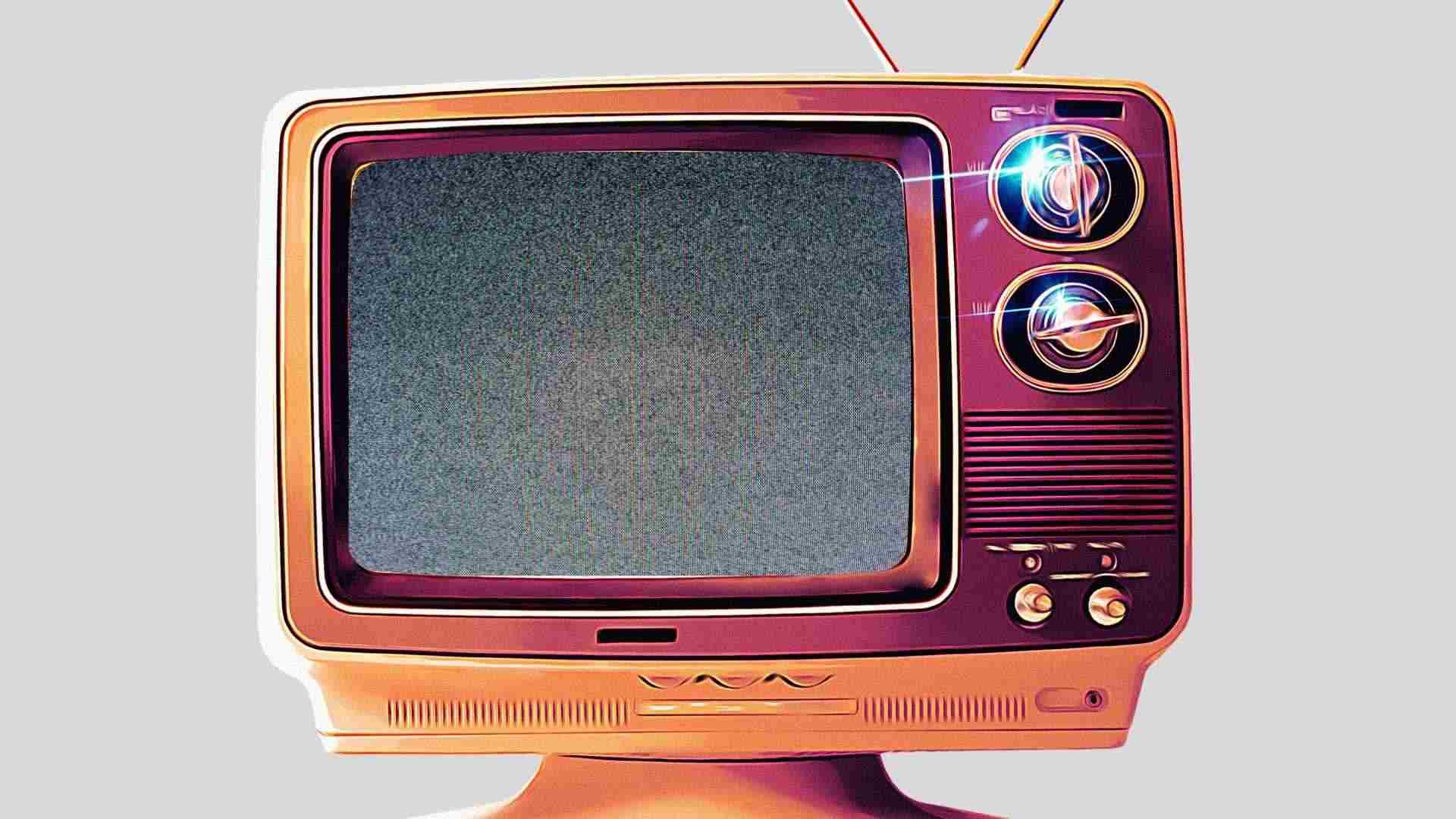According to a survey, 63% of people trust TV ads, while only 48% trust online video ads. [Source: Martech]
People of all ages actually believe in a product shown in TV commercials. This is a great way to get your brand or product noticed, especially if it’s shown on TV.
- Check out the Types of Commercials: A Complete Guide for Businesses
Behind every exciting commercial, a big expert team works diligently with state-of-the-art equipment and brings the most compelling advertisements.
The real question is, how much do these production houses charge for putting in so much effort? Can your budget accommodate the cost of creating a TV commercial?
Get your answer from the very beginning.
| Key Takeaways: TV Commercial Video Production Costs in 2025 | |
| Cost Category | Estimated Cost Range (Per Day) |
| Scriptwriter (Professional) | $400 to $2000 |
| Renting Locations | $700 t0 $4000 |
| Professional Actors | $150 t0 $4000 |
| Directors | $800 to $3000 or more |
| Cinematographers | $600 to $ 2000 |
| High-end cameras | $1000 to $3000 or more |
| Editing Services | $500 to $5000 (Color grading and assembling footage |
| Special Effects | $400 to $2000 (Basic motion and 3D graphics) |
| Music Licensing | $500 to$1000 |
| Cost of air time on TV | $5,000 to $50,000 (30-second TV commercial) |
| Cross-Platform Distribution | $500 to $1000 (Per platform every month) |
- Looking for a killer TV commercial? Check out Localeyes Video Production company.
Key Factors Influencing TV Commercial Production Costs [In Each Step]
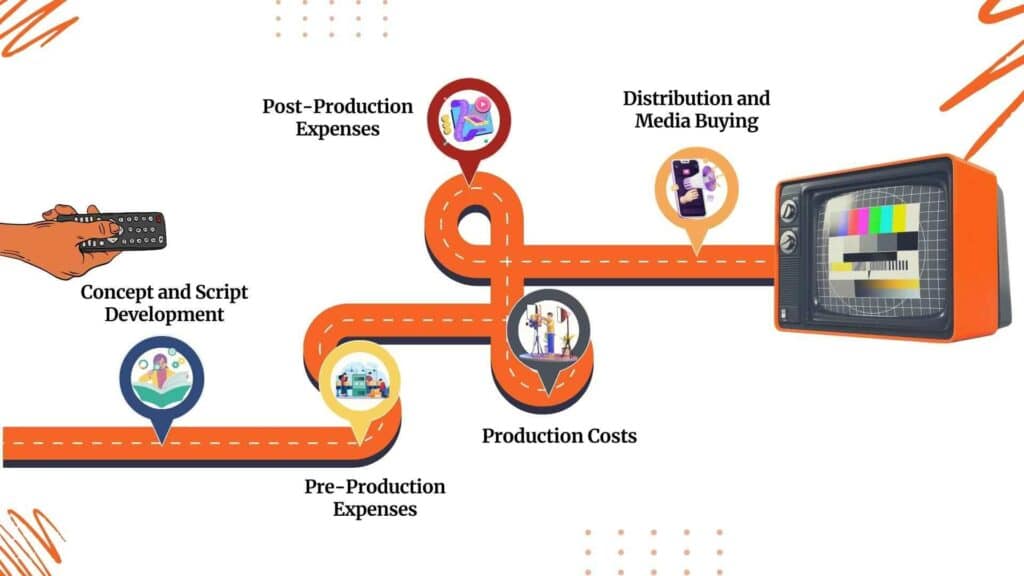
*Declaimer: Below is a rough estimate of the budget for each sector in the video production industry. Remember that the actual costs may vary based on your location, the type of production company you choose, project duration, complexity, and other financial factors.
Pre-Production Expenses
To make a unique commercial, you have to start with an out-of-the-box idea and a bold script. That’s ground zero.
You’ll need to brainstorm to come up with a captivating story and then put it down on paper to bring that story to life on screen.
In pre-production, you will start gathering resources to put the story together.
For that, you will need a location that goes well with the storyline and actors who can act out the story properly.
So, more or less, you can allocate nuggets for these segments:
- Concept and Script Development
- Location scouting
Cost for concept and script development you can expect anywhere:
| Cost Category | Estimated Cost Range (Per Day) |
| Scriptwriter (Professional) | $400 to $2000 |
| Revisions and Finalizing Scripts | $500 to $1,000 (multiple rounds) |
* The budget includes project complexity, extra revisions, research, and storyboarding, which all add to the cost. That’s why we’re increasing the daily funds.
| Location scouting | |
| Cost Category | Estimated Cost Range (Per Day) |
| Renting Locations | $700 t0 $4000 |
| Permits | $100 to $1,000 or more |
* The cost of location scouting will depend on the location, size, and amenities. It can increase if transportation and lodging are added to it.
Production Costs
The production costs cover equipment, expenses for shooting days, and a helpful and skilled crew to maintain the set. These elements all come into play to ensure a higher quality outcome that the audience can even feel from the screen.
Here is the budget you will need to pull off the best production:
| Casting and talent fees | |
| Cost Category | Estimated Cost Range (Per Day) |
| Professional Actors | $150 t0 $4000 |
| Extras | $100 to $300 |
*You will get more idea of the total budget once you decide how many people you will need.
| Production crew costs | |
| Cost Category | Estimated Cost Range (Per Day) |
| Directors | $800 to $3000 or more |
| Cinematographers | $600 to $ 2000 |
| Production Assistants | $200 to $500 |
| Lighting Specialist | $300-$800 |
| Sound Technician | $300-$800 |
* The total budget may vary depending on the experience and reputation of each crew.
| Equipment and Technology | |
| Cost Category | Estimated Cost Range (Rental) |
| High-end cameras | $1000 to $3000 or more |
| Lighting | $500 to $2,000 |
| Drones | $500 to $2000 |
| Lenses package | $300 t0 $1000 |
| Grip Truck/Van Packages | $500 or more (per day) |
*The total cost for equipment can fluctuate based on their condition and capabilities.
Number of Shooting Days: The more days you spend shooting, the more it’s going to cost you. Each extra day means you have to pay more for equipment rental, crew wages, and other stuff.
Post-Production Expenses
Post-production is all about making the existing footage into a high-value one. This is where the final product comes out. In this process, you can have professional editing for the raw footage, adding the correct audio to enhance the image that viewers will watch.
Setting the budget for it depends on your wishes about how you want your final product to look.
| Post-Production Expenses | |
| Cost Category | Estimated Cost Range (Per Day) |
| Editing Services | $500 to $5000 (Color grading and assembling footage |
| Editing Software | $100 to $300 |
| Special Effects | $400 to $2000 (Basic motion and 3D graphics) |
| Sound Engineers | $300 to $1000 |
| Music Licensing | $500 to$1000 |
| Voice Overs | $200 to $2000 |
Distribution and Media Buying
Now comes the real big deal.
After you have the final commercial video in hand, your next target is to reach as wide an audience as possible through the video. For that, you will have to tackle a few expenses to be on specific platforms.
Cost of Air Time on TV:
The price of airtime can vary a lot depending on the network, time slot, and the people who will be watching. For a 30-second TV ad, you can expect to pay anywhere from $5,000 to $50,000. [Source: Ranking]
A prime-time spot could cost you anywhere from $100 to over $5,000. And that’s just for local TV stations; national TV networks might charge even more. Keep in mind that airtime is usually more expensive during peak viewing times, like evenings and weekends, compared to off-peak times.
Digital Integration:
When you distribute content across different platforms like YouTube and social media, it can increase production costs.
There is a chance you will need to create extra content or run online campaigns. You might have to shell out $500 to $1000 or even more for each platform every month.
Budgeting Tips for TV Commercial Production in 2025
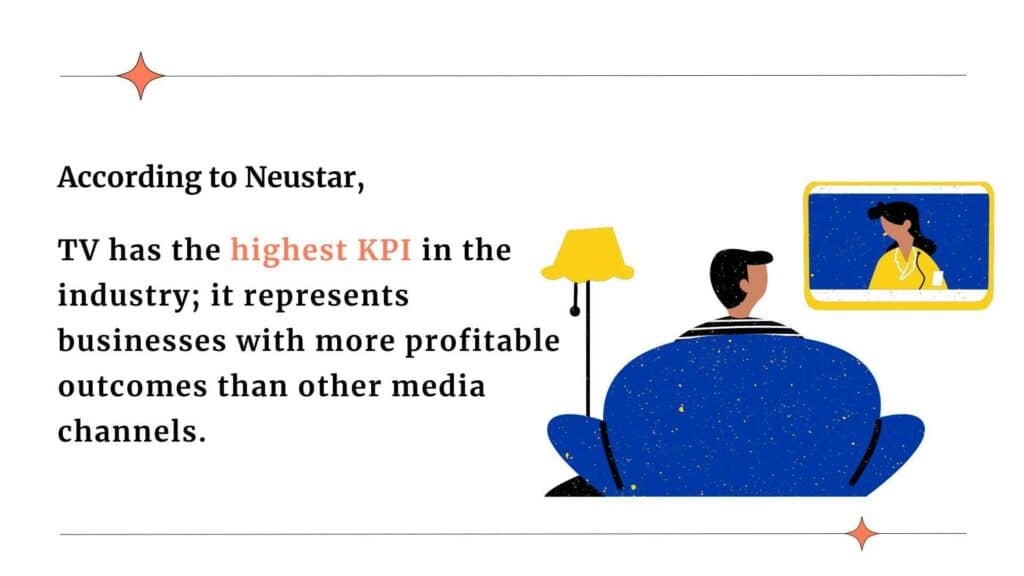
Aligning Budget with Business Goals
Your decision to invest in television advertising isn’t for a lower profit. Your ultimate goal is to double your profit. If that is your motive for boosting sales and increasing conversion rates, allocate your budget accordingly. Each penny will be spent to get it back within months or before the ad campaign ends.
1. Prioritize ROI
According to the research, Television is responsible for about 65% of the impact of media on sales. [Source: The effectiveness & ROI of TV adverts | BearingPoint]
Even LinkedIn and other marketers have seen huge success with TV commercials, claiming they can achieve a 300 to 400% return on investment.
Therefore, whether your ad focuses on brand awareness, lead generation, or sales conversion, select a key KPI to measure its success. Focus on the high-impact areas that will definitely give a strong ROI.
For example, investing generously in compelling stories and striking visuals will engage more viewers, leading to a higher conversion rate.
| To easily calculate your ROI, use this method: → Sales increase – ad spend = gross sales margin. → Gross sales margin / (investment/ad spend) = ROI. |
2. Flexibility
Not everything will be butter-smooth.
Budgeting isn’t just for definite expenses. You will have to keep aside money for unexpected costs as well.
Think about sudden location changes, equipment failure, or shortage of talent cast. Make sure to have some extra cash (usually 10-20% of the total budget) to deal with such unusual surprises.
Working with Professional Production Companies
You will do two things here:
- Choosing the right production house
- Negotiation and cost-saving strategies.
Budget shouldn’t be a big deal if you manage to have a good production company on board. Eventually, you will double your investment with their help.
So, when you are on watch for a video production company, look into their:
- Experience
- Expertise
- Reputation
- Portfolio
- Pricing structure
- Customer feedbacks
- Achievements
Don’t be afraid to negotiate with production companies to get the best possible deal. Just as they are here for the money, you are also here to get the best out of them.
So, why not explore more options and ask for the possibility of cost reduction?
Go for bundling services, using existing equipment, or shooting during off-peak seasons to cut down expenses. You can even ask for discounts or flexible payment options if you work together for a while.
DIY vs. Professional Production: Which One Is Better?
Whether to produce the TV ad in-house or hire a professional production company is up to you. Your resources, budget, and the expertise you are looking for will be the decision-makers here.
If you ask us, the answer is that DIY will be cheaper but will lack quality and effort. Conversely, video production companies have more expertise but come with a higher price tag.
Here is a cost breakdown for both options:
| DIY Production | ||||
Per Day | Equipment rental | Location fees | Licensing fees | Post-production expenses |
| $800 to $2,000 | Varies where you are shooting (Daily or hourly rate) | $20 to $100 (Royalty free music for per track) | Low-cost or free editing software. | |
| Professional Production Company | |||
Depends on the project’s complexity | Production fees | Post-production fees | Crew and Equipment |
| $5,000-$50,000 | $2,000-$10,000 | $500-$5,000 (Per person) | |
Additional Costs to Consider
Licensing Fees for Music, Graphics, and Footage
Music and visuals have a big impact on commercials. When you combine music and graphics, up to 87% of consumers trust the brand. This is a big deal because it shows how music and visuals can make people feel emotions and buy stuff.
Regarding the cost, one important thing to consider when choosing graphics and music is whether it’s royalty-free or licensed content.
| Definition | Cost | |
| Royalty-free content | It is a one-time fee for broad usage without paying royalties. | 10 dollars to 50 per track or clip. |
| Licensed content | Taking a license from the creator or rights holder to use their exclusive content. | 5oo dollars to 1000 dollars, depending on the artist. |
Travel and Accommodation for Out-of-Town Shoots
Once you decide to step out from your local location, you will see how your money is vanishing.
Shooting outside means the travel and accommodation expenses add up to the accounts. Those are basically airfare, ground transportation, lodging, and meals for crew and talents.
Here is the round-up of travel expenses for crew and talent:
| Factors | Cost |
| Flights | $1,000 per person for a round-trip flight (Depending on the distance, airline, and travel dates) |
| Accommodation | $100 to $500 per night for a hotel room (Varies on the location, time of year, hotel rates) |
| Transportation | $1,000 (assuming rental car costs and transportation within the city) |
| Meals | Predicting $20 to $50 per person per day on food. |
Trends Shaping TV Commercial Costs in 2025
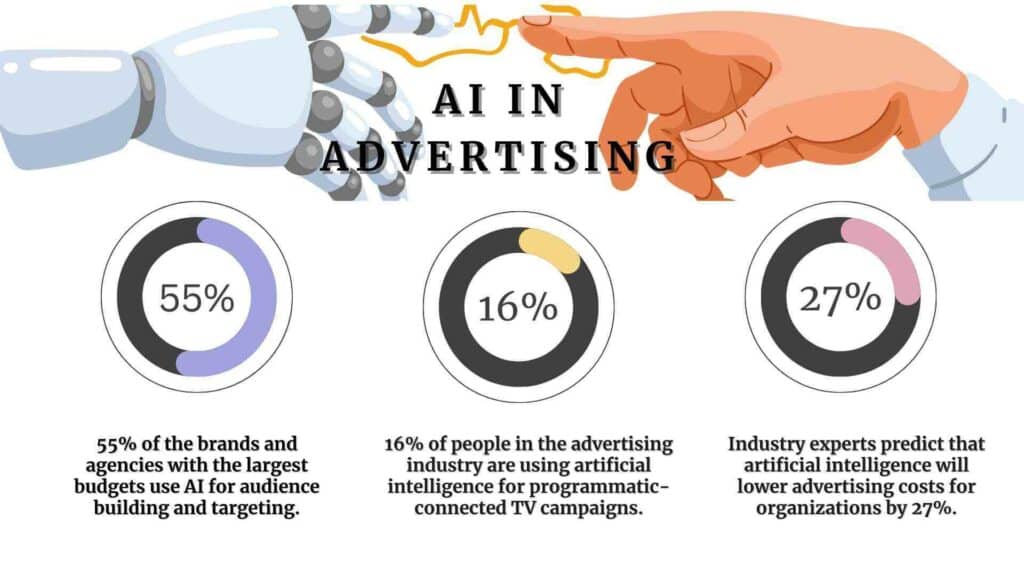
Advancements in Production Technology
AI in TV commercials isn’t surprising. It is being used in various aspects of TV commercial production.
AI is a great resource for reducing costs in areas like editing and visual effects.
At first, it might seem like a higher-budget implementation, but taking a chance on it could generate more leads in the future.
Rise of Hybrid Commercials
It has been shown that combining digital and TV spots increases ROI by 60%. [Source: Advertising Research Foundation]
Digital elements in TV ads, like interactive features or social media promotions, will likely keep growing in 2025. This can increase production costs because it needs more planning, development, and coordination.
Sustainable Productions
The entertainment industry, especially TV commercial production, is really focusing on being more sustainable.
They’re all into:
- Being eco-friendly
- Using energy-efficient stuff
- Reducing waste
- Backing sustainable suppliers
This is not just great for the environment; it also keeps costs in check.
How to Optimize Costs Without Compromising Quality?
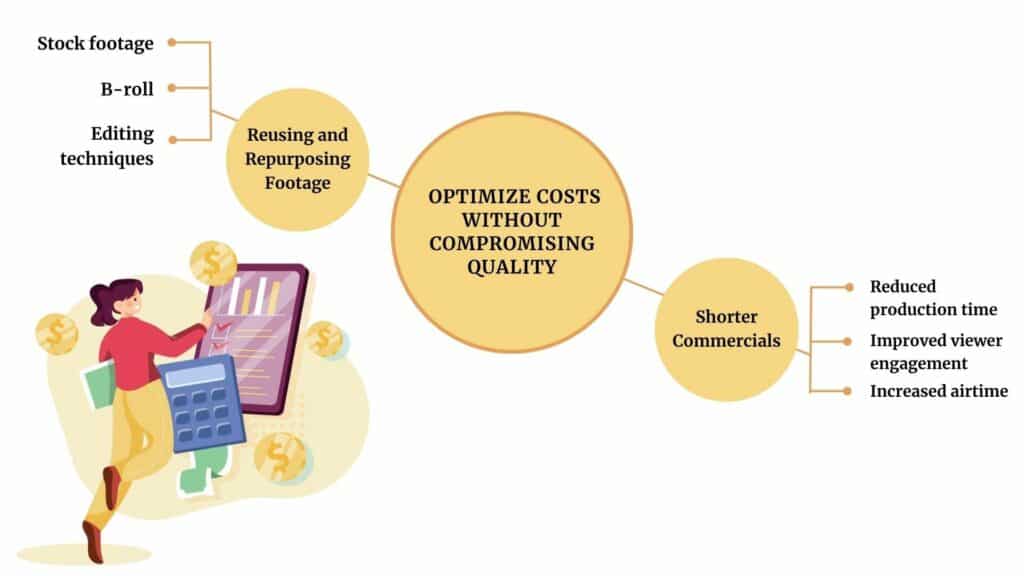
Let’s help you with the budget in another way.
A few practices or techniques will optimize your cost. You don’t have to compromise on the quality of your commercial here.
1. Reusing and Repurposing Footage
- Stock Footage: There are thousands of high-resolution footage and photos available on the internet’s stock footage libraries. You can easily access affordable content for your advertisement.
- B-roll: Try capturing extra footage during your shoot. You can use it in multiple commercials or as filler content.
- Editing techniques: Use transitions, slow motion, and time-lapse to create new visuals from existing footage. Change here and there, add some creativity, and your video is ready to be released.
2. Shorter Commercials
- Reduced production time: Go for shorter commercials if it fits your idea. In that way, you will need less time for shooting, and the cost won’t be overflooding for all those production expenses.
- Improved viewer engagement: Research said that short seven-second ads are just as good as 15-second ones for making people remember the ad and its message. [Source: JAR March 2020 – The ARF] Using short ads to grab people’s attention and get your message across is beneficial.
- Increased airtime: A study discovered that 30-second ads lead to 24% higher conversions than 15-second ads. Using shorter ads means they can be shown more often on TV, boosting your brand exposure and improving your ROI.
Frequently Asked Questions: TV Commercial Video Production Costs in 2025
What is the average cost of a TV commercial in 2025?
When it comes to a 30-second TV commercial, the cost can vary from $5000 to $50000, depending on things like how fancy it looks, where it’s filmed, and who’s starring in it.
Are there any hidden costs in TV commercial production?
Yes, there are.
These hidden costs include licensing fees, travel expenses, and unexpected production delays.
How can I reduce the cost of producing a TV commercial?
In this situation, what you can do is make shorter commercials, reuse footage, and negotiate with vendors. Also, you could hire a smaller crew and pick more affordable locations. These things might help you cut costs.
What’s the difference in cost between TV and digital commercials?
The big difference in cost between TV and digital commercials is that TV commercials are way more expensive than digital ones. This is because TV commercials require bigger crews, pricier equipment, and higher licensing fees. All of this is because TV ads have limited air time, which digital commercials don’t have.
What are the main factors influencing TV commercial production costs?
1. Production value
2. Length
3. Location
4. Talent
5. Crew size
6. Post-production
How much should I budget for a 30-second TV commercial in 2025?
It’s difficult to give an exact figure, but expect to budget at least $5,000 to $10,000 for a basic commercial and potentially much more for high-quality productions.
Can I reduce TV commercial production costs without sacrificing quality?
Yes, definitely.
You can use strategies like repurposing footage, negotiating with vendors, and choosing cost-effective locations.
What new technologies will impact production costs in 2025?
AI will add an extra layer of advancement to production. You might have to invest in AI to get higher-quality results in 2025.
How do I choose the right production company for my TV commercial?
Look for these:
1. Experience
2. Portfolio
3. Reputation
4. Pricing and
5. Alignment with your vision

Founder at LocalEyes Video Production | Inc. 5000 CEO | Emmy Award Winning Producer

